Posts Tagged ‘trout’
{{start}}
{{end}}
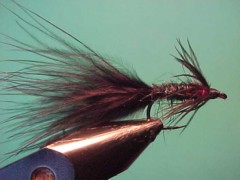
{{+1}}Bibio bugger – Chatto’s original{{-1}}
{{start}}
There are a few flies that I have absolute confidence in and consequently have no hesitation in tying them on if I am in unknown territory and am up for a bit of prospecting. This fly is really a merging of two of them and it is so consistent that its has earned its own place amongst my top 10 or so trout flies. The two flies that were merged to form this fly were of course the bibio and the standard black woolly bugger. Whilst the bibio still holds its own place in my top 10 or so trout flies this bibio bugger has displaced the standard black woolly bugger.{{end}}
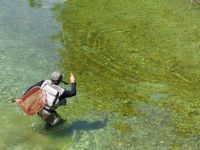
{{+1}}Rivers – French leader / longer leader set up{{-1}}
{{start}}
"French leader" or often called "French Roll Casting" came to my attention in 2009 through the competition sports fly fishing scene. At that stage I was president of Fly Fish Australia and also had the honour on being on one of its international representative teams. This technique was all the buzz and to those that had the opportunity to embrace it the technique was fantastic in the right water.{{end}}
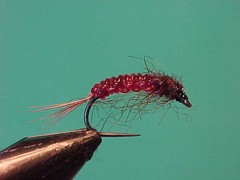
{{+1}}Flat knitted nymph{{-1}}
{{start}}
Because the nymphs of many mayflies and caddis spend a good part of their life cycle living under rocks in both still and running water its not surprising that many have taken on a relatively flat form. This knitted grub has a relatively flat body mimicking many of the naturals and also has plenty of structure on the body suggesting the various body segments.{{end}}
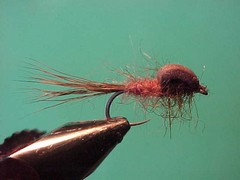
{{+1}}Floating nymph{{-1}}
{{start}}
This nymph applies elements of each of these two principals of science. The materials are all as buoyant as possible. This includes the tail which is deer hair and of course "hollow' and the closed cell foam which has tiny bubbles of air trapped within its membrane. It also has a reasonable "foot print" made up of the tail, and teased out seals fur body and thorax. Seals further adds a further benefit to the fly in that with a couple of brisk false casts it easily sheds water.{{end}}
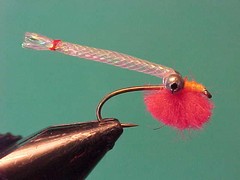
{{+1}}Egg sac fly{{-1}}
{{start}}
Around 50 days after eggs have been lay sac fry hatch. These fry are poor swimmers because of the sac and consequently the imitation should be fished amongst the rubble on the stream bed or on the dead drift. Fish them under an indicator and respond to slightest irregular movement in the indicator in the same way you would if nymph fishing.{{end}}
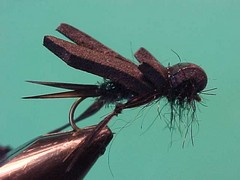
{{+1}}Foam cricket{{-1}}
{{start}}
If you fish fast water and need a very buoyant hopper or a buoyant fly to support a nymph try this one. Trout love crickets probably because that represent a pretty big serve of protein.{{end}}
{{+1}}Rivers – my one rod set up in 2012{{-1}}
{{start}}
My compromise set up for rivers involves replacing the Camou leader from the French leader set up with a clear floating line and the long yellow indicator with a bright braided loop on the end of the fly line.{{end}}

{{+1}}Foam hopper – Chatto original{{-1}}
{{start}}
If you fish fast water and need a very buoyant hopper or a buoyant fly to support a nymph try this one.{{end}}
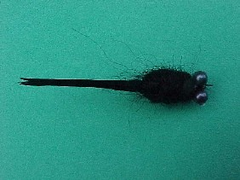
{{+1}}Tadpole{{-1}}
{{start}}
Fish the tadpole fly either on the drop or the lift in shallow water around detritus matter. This action mimics the action of a tadpole coming to the surface to breath and then returning to its cover and is a prime time for trout to strike.{{end}}
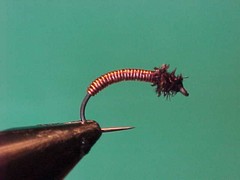
{{+1}}Brassie{{-1}}
{{start}}
The Brassie fly has been around for a long time and certainly has a place in ever river fly box. It's a handy fly to have on hand if you need a buggy looking fly that sinks quickly or an anchor fly for a team of two or three flies.{{end}}













